Search
Search Results
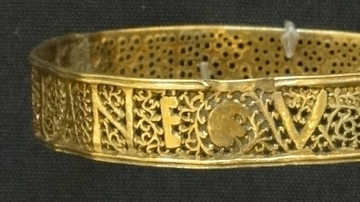
Image
Gold Bangle, Hoxne Hoard
A gold bangle from the Hoxne Hoard, Suffolk, 4th-5th century. The British Museum, London. The Hoxne Hoard was discovered in Suffolk, in the east of England in 1992. The incredible collection contains 14,865 late-4th- and early-5th-century...
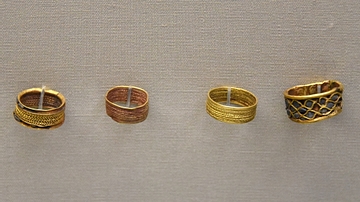
Image
Mesopotamian Finger Rings
These rings were found on the fingers of a woman named Puabi, inside her grave. Puabi was a Semitic Akkadian woman from Ur, c. 2600 BCE, possibly a queen or priestess. Two rings were made of gold wire that was twisted before being wound...
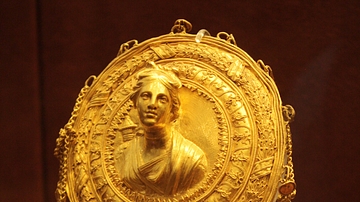
Image
Gold Hairnet
A gold hairnet, Greece, 3rd century BCE. In the centre is a relief of Artemis. (National Archaeological Museum, Athens)
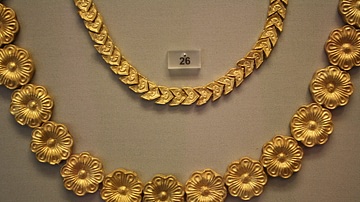
Image
Mycenaean Gold Necklaces, Dendra
A Mycenaean gold necklace from Dendra, 15-14th centuries BCE. (National Archaeological Museum, Athens)

Image
Gold Earrings, Herakleia
Gold disk earrings with filigree decoration. Tomb 22, southern necropolis, Herakleia, southern Italy. 4th century BCE. (Archaeological Museum of Siritide, Policoro, Italy)
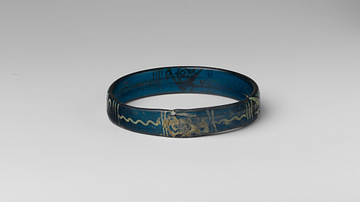
Image
Byzantine Bracelet with Birds and Geometric Patterns
Created sometime between 1100-1400 CE, this Byzantine bracelet is made of glass and a silver stain. It measures 7.5 x 1.4 x 0.4 cm. (Metropolitan Museum of Art, New York)

Image
Gold Foil-Covered Lead Bulla from Ancient Ireland
Two small gold foil-covered lead bullae (amulet or pendant), found inside a ceramic vessel, from Annaghbeg or Monasterredan, Co. Sligo, Ireland, c. 800-700 BCE.
National Museum of Ireland-Archaeology, Dublin.
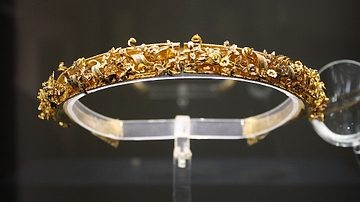
Image
Gold Diadem, Canosa
A gold diadem with carnelian and garnets from Canosa, Bari, southern Italy. 3rd-2nd century BCE. (Archaeological Museum of Taranto, Italy)
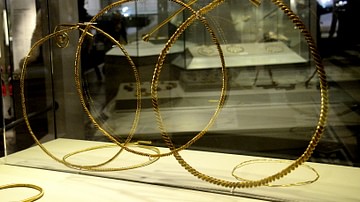
Image
Gold Torcs from Ancient Ireland
Three gold torcs, found at Tipper South, Co. Kildare, Ireland, 1200-1000 BCE.
National Museum of Ireland-Archaeology, Dublin.
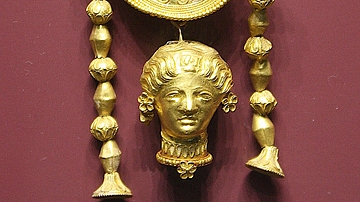
Image
Gold Earring, Tarentum
A gold pendant earring from Tarentum (Taranto), southern Italy. 4th century BCE. (Archaeological Museum of Taranto, Italy)